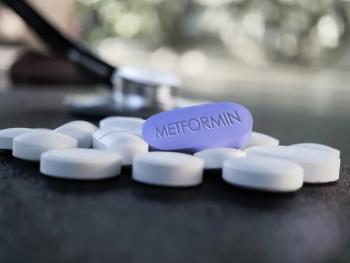
Pre-pregnancy obesity potentially linked to increased risk of AD in infants
Investigators added that this risk might possibly be through intrauterine effects, while associations with wheezing might be confounded by familial clustering factors.
A new investigation from China suggested that maternal pre-pregnancy overweight and obesity could possibly increase the risk of atopic dermatitis in infants via intrauterine mechanisms.
Investigators added that the association with wheezing in mothers might be confounded by uncontrolled familial factors, and that this new data could be valuable in early-life prevention of allergic diseases.
Earlier studies referenced in the present investigation had linked pre-pregnancy body mass index (BMI) and gestational weight gain (GWG) to allergic disorders in offspring.
However, the associations observed in these studies remained inconsistent and possibly confounded by unmeasured familial factors.
As such Jianrong He, MD, Guangzhou Women and Children’s Medical Center, Guangdong, and other investigators examined the association of maternal weight with offspring allergic disorders by using parental BMI as a negative control exposure.
The Methods
For the present study, He and colleagues included data from the Born in Guangzhou Cohort Study (BIGCS) that occurred from 2012-2017.
Women were recruited for the BIGCS prior to 20 weeks’ gestation at the Guangzhou Women and Children’s Medical Center, and subsequent follow-ups were recorded during the second and third trimester of pregnancy, at delivery, and from 6 weeks postpartum until the children reached adulthood.
Data from that study consisted of maternal weight obtained from questionnaires and obstetric records, and paternal weight was determined through a series of questionnaires.
Additionally, atopic dermatitis and wheezing at the age of 1 year were defined in the study according to parent-reported physician diagnosis.
A total of 12,845 pregnant mothers who gave birth between February 2012 and December 2017 and attended the 1-year follow-up were included in the analysis. Investigators also included data on 10,522 children from the BIGCS.
Risk ratios for each child were estimated by log-binominal regression, with mutual adjustments for maternal and paternal weight status.
The Findings
He and fellow investigators reported that more than half (67.3%) of the women included in the study had normal BMI, while 22.5% were underweight and 10.2% were either overweight or obese.
Regarding GWG, 46.3% of mothers were adequate, while that of 26.3% and 27.4% of mothers were considered inadequate and excessive, respectively.
Additionally, more than half (56.3%) of the fathers had a normal BMI. Among the participants included, 16.2% and 7.9% of the children had atopic dermatitis and wheezing, respectively.
The investigators observed that maternal pre-pregnancy BMI was not associated with the risk of atopic dermatitis in infancy, as a continuous variable.
However, when considered as a categorial variable, maternal pre-pregnancy overweight/obesity was associated with a 20% increased risk of atopic dermatitis in infants (aRR, 1.20; 95%CI, 1.04-1.37), compared to normal weight.
Maternal pre-pregnancy BMI (continuous) was associated with an increased risk of wheezing in infancy (aRR 1.13; 95% CI, 1.00–1.27 for per 5 kg/m2 increase in BMI), and a similar association of paternal pre-pregnancy BMI was association with the risks of wheezing.
Compared with children of mothers with both normal weight before pregnancy and adequate GWG, children of mothers that were overweight/obese before pregnancy and excessive GWG had a higher risk of AD (aRR 1.64; 95%CI, 0.96-2.80).
Overall, when investigators used paternal BMI as a negative control exposure, they found that maternal pre-pregnancy overweight/obesity was associated with increased risk of atopic dermatitis in children, while both maternal pre-pregnancy BMI and paternal BMI were associated with a higher risk of infants’ wheezing.
“These results suggest that maternal overweight/obesity might increase the risk of AD in infants, possibly through intrauterine effects, while its association with wheezing might be partly confounded by familial clustering factors,” the team wrote. “If confirmed in future studies, our findings may have important implications in early-life prevention for offspring allergic diseases.”
The study,
Newsletter
Get the latest clinical updates, case studies, and expert commentary in obstetric and gynecologic care. Sign up now to stay informed.










